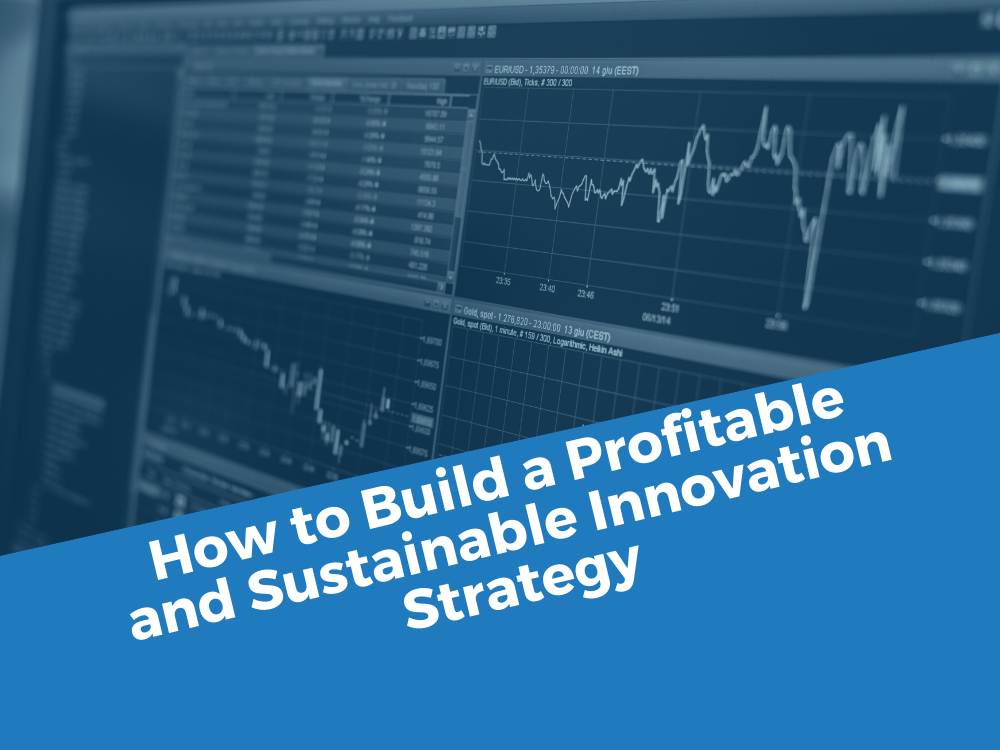Many agree that innovation is a priority and that having a culture of innovation is crucial for the ongoing growth and success of your organization. However, lacking a clear innovation strategy can be a fundamental problem that puts success out of reach. Your innovation strategy is like a roadmap to the desired future of your business. Without a map, a lot of time and resources might be wasted trying to achieve your goals, if you ever reach them at all. It is critical that you take the time to create a strategy that is tailored to your business needs and goals. Here are 6 approaches on how to build a profitable and sustainable innovation strategy.
Set Clear Objectives
The first and most important step in creating a strategy is defining the end goal. It helps to clearly state the why behind your innovation initiatives. Before the planning process starts, you should be able to understand what you want to achieve through innovation. Once this step is reached, everyone involved will have a clearer idea of how to move forward. The goals of your innovation strategy and overall business objectives should support one another for the best results. Although you may have to tweak your existing business model, a new innovation strategy does not mean that you must throw out the old one.
Understand Customers and Competitors
In order to develop a strategy that will address these objectives, you must know what market you are appealing to and what customers you give value to. Responding to customer needs is important for success. This means listening to customers to truly understand what they want. Competitors will always be present, and they should not be ignored. Although it is not wise to copy competitors, you can learn from their strategy and see what is working and what is not. Combining these perspectives can be very helpful in planning your strategy.
Assess Capabilities and Systems
To develop an effective innovation strategy, your business also needs the ability to successfully implement the strategy. Collecting an inventory of capabilities, skills, and systems shows where the organization is currently. From there, you can analyze what is needed to implement your strategy and reach objectives. Then, a realistic view can be created of the necessary path to your goal. Part of innovation is connecting resources in a new way to fill in gaps or improve processes. So it is not always necessary to spend time and money on new resources but instead adapting old resources in new ways.
Embrace Failures
Failure is inevitable, but it is not the end. In fact, failure often sparks innovation as you learn from mistakes to create something even better. Many companies view failure as something to be avoided at all costs, but they might be missing out on valuable insights. It is important to embrace failure as a learning experience when it occurs. In an article published by Innovation Leader, Planbox CEO Ludwig Melik says, “Innovation should be viewed as the perpetual pursuit of learning.” To read the article How Can Failures Fuel Learning?, click here.
Follow the Leader
In our previous blog on Who Should Really Drive Your Digital Transformation, we discuss why the C-suite has historically driven transformation. If a C-suite executive does not make innovation a priority within their respective department or within the organization as a whole, then it is less likely to happen. It is important for your innovation strategy to have the strong executive backing required for this kind of risk-taking. It also shows that your organization is on board with one another from the top to the bottom. Strong innovative leaders are role models for your employees, and they provide direction for carrying out the strategy.
Know When to Move On
Projects and processes that do not work need to be eliminated to make room for new innovative activities. This might seem like common sense, but it can be difficult to abandon old processes that have always been a part of the company. Employees are likely to be unmotivated by old, ineffective ways of doing things, and it can waste valuable resources. Be sure to include only profitable activities in your innovation strategy and evaluate possibly outdated processes.
There is not a magic strategy or formula that will work for every business. To find the right strategy that works best for your organization, you must evaluate the risks and rewards of innovation in relation to your industry, competitors, and consumers, and following these tips will help you develop an effective innovation strategy. Once you have a strategy in place, using the right platform and program will lead your innovation initiatives to success. To learn about Planbox’s Agile Innovation Management Solution, click here.
Sources:
- https://www.extension.harvard.edu/professional-development/blog/innovation-strategy-4-key-tactics-top-growth-companies
- https://www.forbes.com/sites/forbestechcouncil/2019/12/12/three-principles-for-building-a-successful-innovation-strategy/#1fac0d4c4fcb
- https://www.inc.com/joe-galvin/want-to-completely-upend-status-quo-make-sure-you-choose-1-of-these-4-strategies.html
- https://innovationmanagement.se/imtool-articles/7-strategies-for-sustained-innovation/

